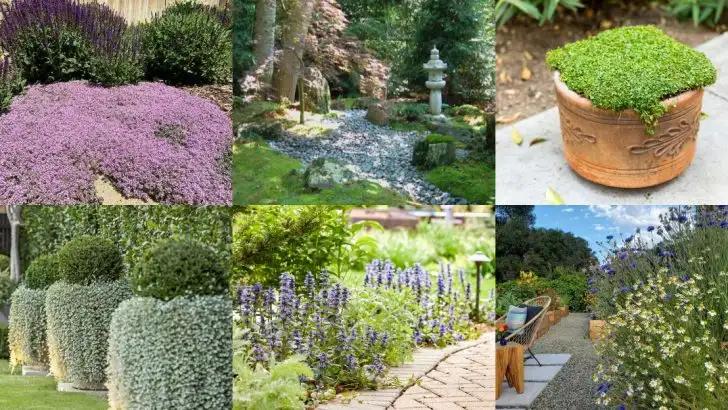Grass is not the star of your yard. It’s the canvas. And it’s begging for something bold, leafy, and a little unexpected to steal the show. The truth? Most lawns are boring. A green sheet with zero personality. But toss in a few surprise players—plants that pop, sprawl, or shimmer—and suddenly, your lawn feels alive. We’re talking blooms next to blades. Drama next to dull. Texture where there used to be… just mowing. Ready to rethink what your grass is really good for? Let’s shake up the usual and turn your lawn into a scene worth staring at.
Creeping Thyme

Creeping Thyme’s tiny purple blossoms add a splash of color to any lawn. This fragrant groundcover thrives underfoot, releasing a delightful aroma when stepped on. Its hardy nature allows it to withstand foot traffic, making it an excellent choice for pathways. Besides its beauty, it attracts pollinators like bees, enhancing your garden’s ecosystem. Consider planting it in sunny areas for lush growth; it dislikes too much shade. Its easy maintenance, needing little more than occasional trimming, makes it a gardener’s favorite.
Chamomile

Chamomile, with its dainty white petals and sunny yellow centers, offers more than just aesthetic appeal. Known for its calming properties, this plant can be brewed into soothing teas. Its resilience in poor soil conditions makes it an ideal companion for grass lawns. Plant it in well-drained soil with plenty of sunlight to see it flourish. Not only does it soften the landscape, but it also attracts beneficial insects, contributing to a healthier garden environment.
Corsican Mint
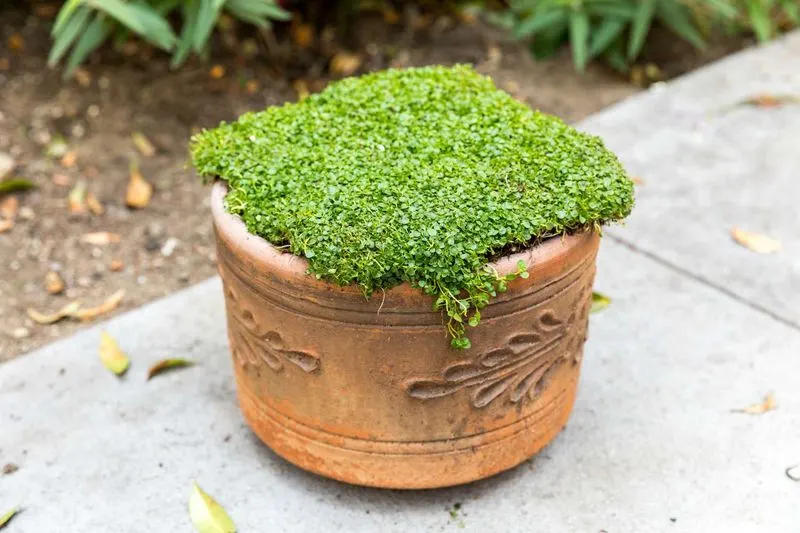
Tiny yet mighty, Corsican Mint spreads smoothly across lawns, offering a fresh minty aroma. Its petite green leaves form a lush carpet that tolerates light foot traffic. Perfect for filling gaps between stepping stones, it thrives in moist, shaded areas. Though delicate in appearance, it withstands cooler climates, being an ideal plant for those looking to add fragrance and greenery to their garden without overwhelming the grass lawn.
Dichondra

Dichondra’s cascading silver-green foliage adds a touch of elegance to any garden. This low-growing plant forms a dense mat that integrates seamlessly with grass. Its ability to spread quickly fills bare patches in lawns, providing a consistent green cover. It’s drought-tolerant and requires minimal care, thriving in both sun and shade. The unique leaf shape adds visual interest, making it a charming addition to outdoor spaces.
Clover
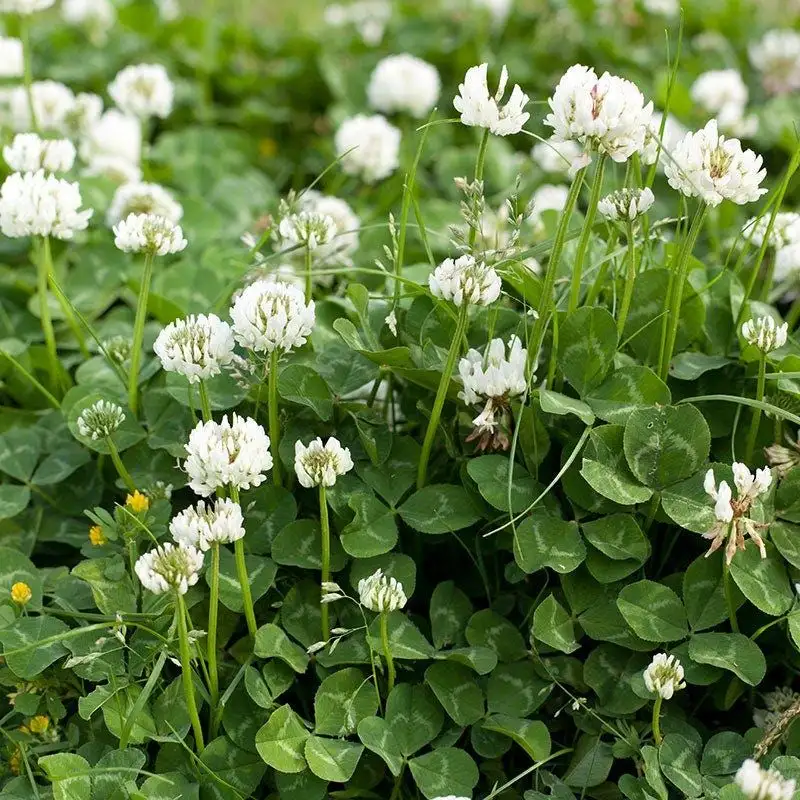
Clover, often seen as a weed, offers unexpected benefits when combined with grass. Its nitrogen-fixing properties improve soil health, leading to richer, greener grass. Clover’s soft texture is gentle on bare feet, and its white and pink flowers provide a splash of color. Hardy and drought-resistant, this plant requires little maintenance, making it a practical and eco-friendly choice for lawns.
Moss

Moss’s velvety green texture brings a serene, earthy feel to shaded lawns. Requiring little more than moisture, it thrives where grass struggles, filling in gaps with ease. Moss’s ability to retain water helps in reducing soil erosion, and its low-growing nature means no mowing is needed. This evergreen plant offers a timeless charm and is perfect for those seeking a low-maintenance, tranquil garden.
Ajuga (Bugleweed)

Ajuga, or Bugleweed, is known for its striking purple-blue flower spikes that rise above its glossy leaves. This groundcover thrives in shady areas, providing a pop of color where grass may falter. Its ability to suppress weeds makes it a valuable addition to any lawn. With minimal care, this plant offers a vibrant carpet that enhances the landscape’s visual appeal.
Liriope (Lilyturf)
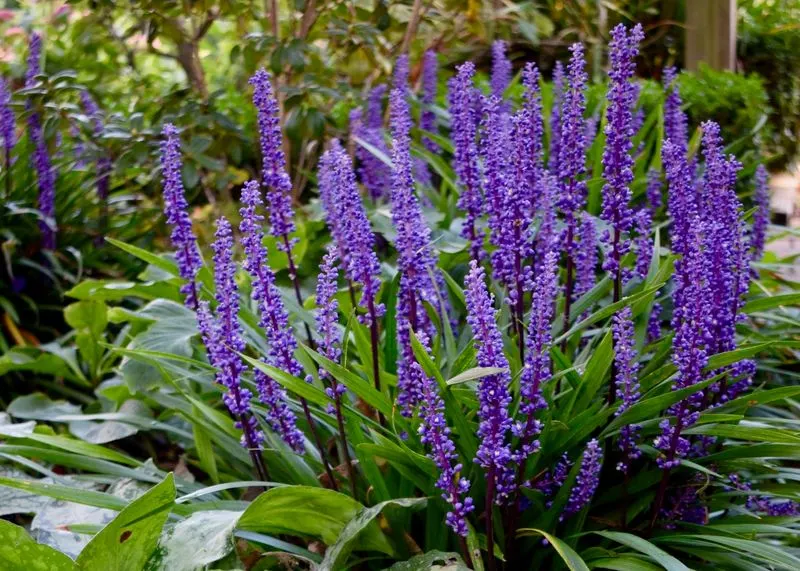
Liriope, often mistaken for grass, stands out with its spiky leaves and vibrant purple flower clusters. It’s a perfect border plant, adding definition to lawns. Tolerant of various conditions, Liriope thrives in both sun and shade. Its resilience makes it an excellent choice for those looking to add texture and color without extra effort. Regular watering ensures optimal growth, but it withstands dry spells gracefully.
Sedum
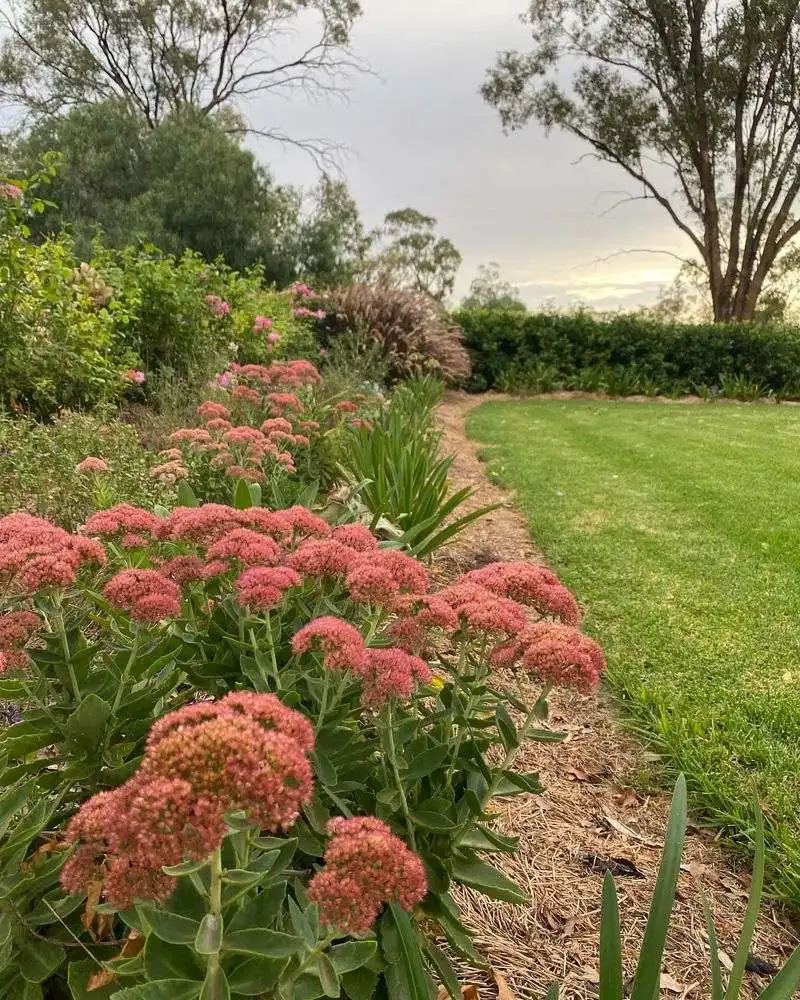
Sedum’s fleshy leaves and star-shaped flowers create a vibrant tapestry across lawns. This succulent’s drought tolerance makes it ideal for gardens seeking low-water solutions. Available in various colors, from reds to greens, Sedum adds depth and texture. Plant it in sunny spots for the best display. Its ease of care and stunning appearance make it an appealing choice for enhancing outdoor spaces.
Sweet Woodruff
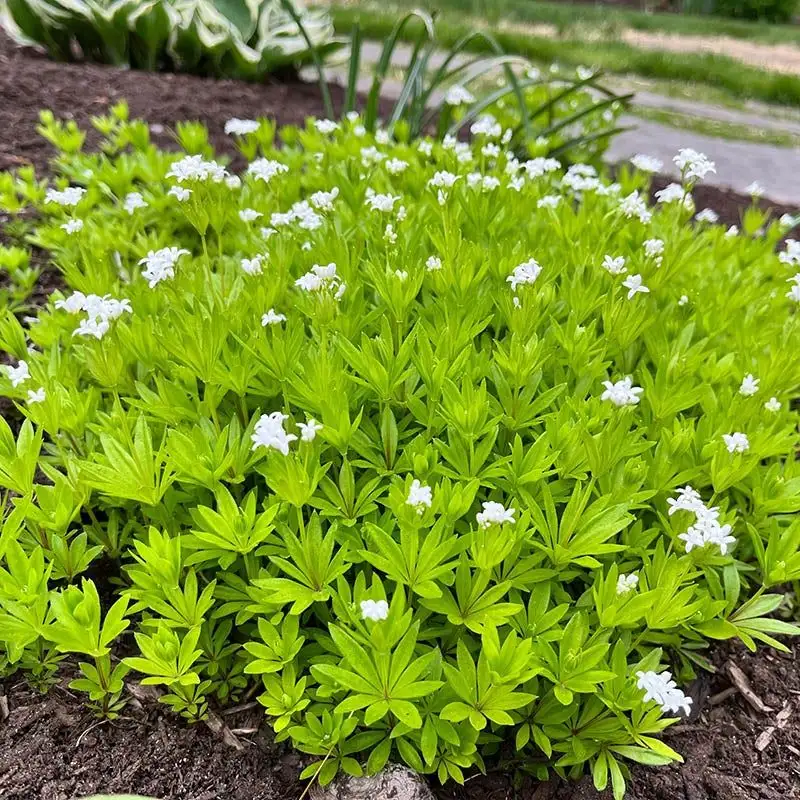
Sweet Woodruff’s delicate white flowers and whorled leaves create a fairy-tale feel in gardens. This shade-loving plant releases a sweet hay-like fragrance, especially when crushed. It’s ideal for planting under trees or in shaded corners where grass may struggle. Beyond its beauty, Sweet Woodruff can be used in potpourri, adding a sensory dimension to your garden’s experience.
Yarrow
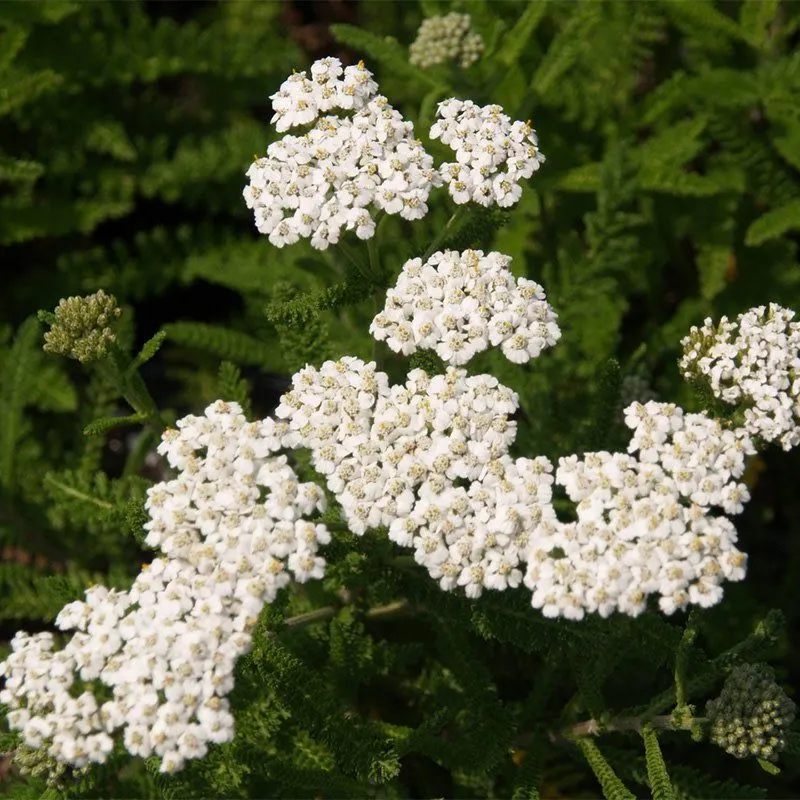
Yarrow’s feathery foliage and cheerful yellow flowers stand out beautifully against grassy backdrops. Known for its drought resistance, it’s a sturdy plant that requires minimal water. Yarrow attracts beneficial insects, promoting a healthy garden ecosystem. Its medicinal properties, used in herbal remedies, add to its appeal. Plant yarrow in sunny spots for best results, ensuring your garden remains vibrant and lively.
Dandelion
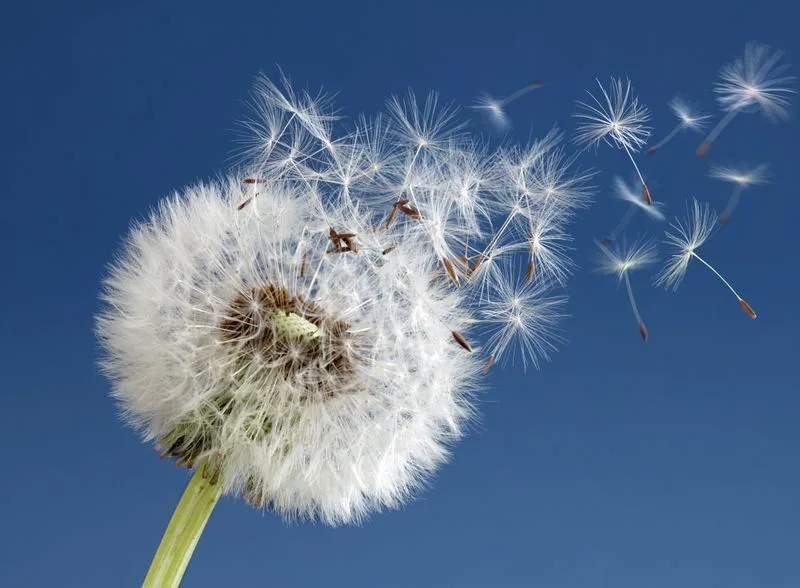
Dandelions, often dismissed as weeds, bring unexpected charm with their bright yellow flowers and seed head puffballs. Beyond their cheerful appearance, dandelions are edible and packed with nutrients, offering health benefits. Their deep roots aerate the soil, improving lawn health. Embrace dandelions as part of a natural, low-maintenance lawn, providing both beauty and ecological benefits.
Creeping Jenny
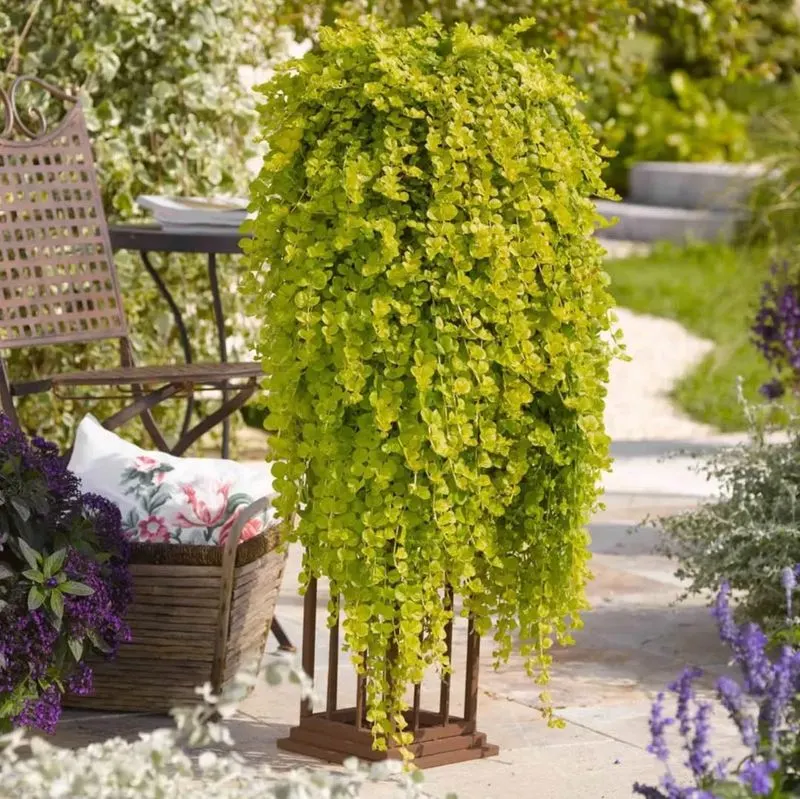
Creeping Jenny’s golden-yellow foliage cascades beautifully, creating a striking contrast with green grass. This fast-growing groundcover thrives in both sun and partial shade, making it versatile for various garden spots. Its trailing nature allows it to fill gaps effortlessly, providing a lush, colorful carpet. Regular pruning keeps it in check, ensuring it complements rather than overwhelms your lawn.
Lamb’s Ear
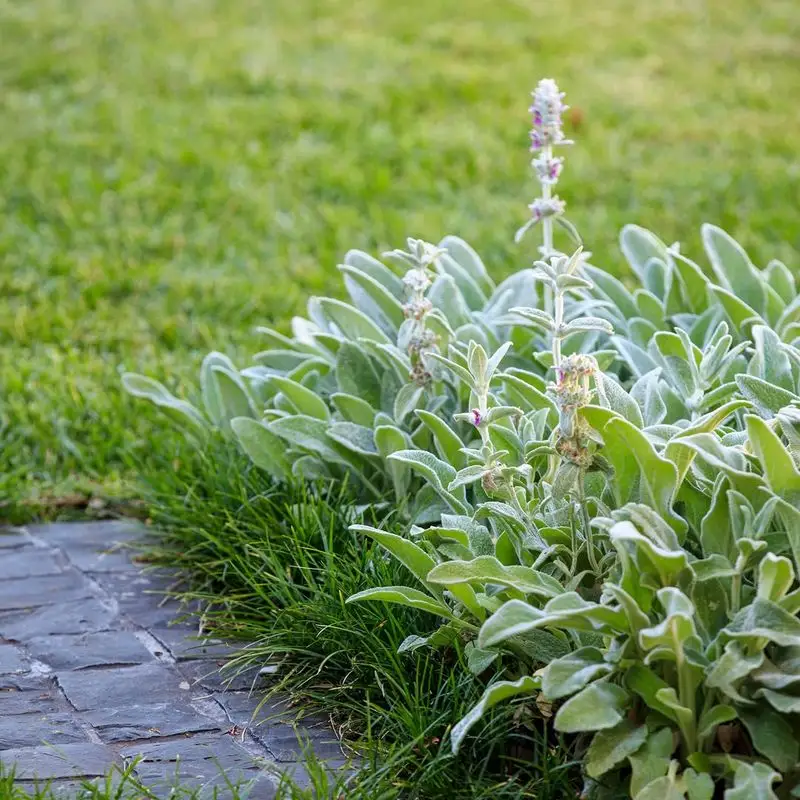
Lamb’s Ear’s soft, silvery leaves provide a tactile experience that delights both young and old. This hardy perennial thrives in sunny spots, offering a unique texture and color contrast to lawns. Its drought tolerance makes it a practical choice for water-wise gardens. Plant Lamb’s Ear in well-drained soil and enjoy its low-maintenance charm, providing visual interest year-round.
Periwinkle (Vinca)
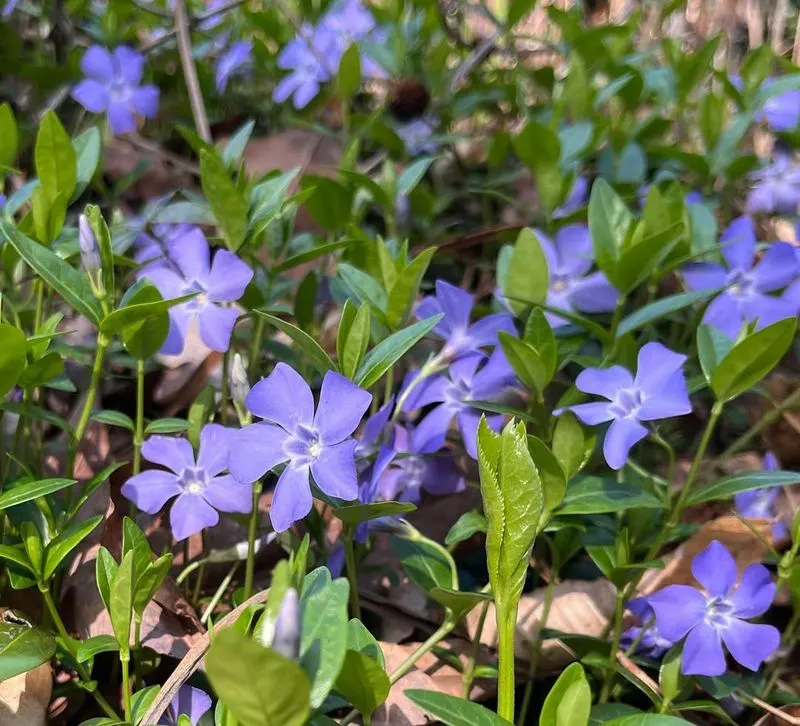
Periwinkle, with its glossy green leaves and vibrant blue flowers, brings a touch of elegance to grass lawns. This fast-spreading groundcover thrives in shaded areas, suppressing weeds and preventing soil erosion. Its year-round appeal adds consistent beauty to gardens. Water regularly to maintain its lush appearance, and enjoy the burst of color and life it brings to your outdoor space.
Fescue
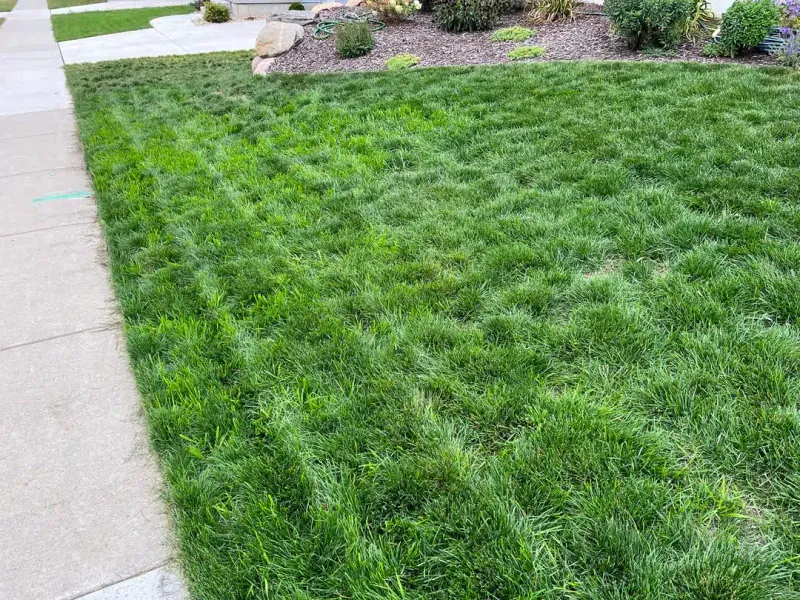
Fescue isn’t just for lawns; its diverse textures and colors can add depth and interest to garden landscapes. These cool-season grasses are drought-tolerant and require minimal maintenance once established. Plant fescue for a natural, meadow-like appearance. Their fine blades and gentle movement in the breeze create a dynamic visual effect, enhancing the overall garden design.
Oregano
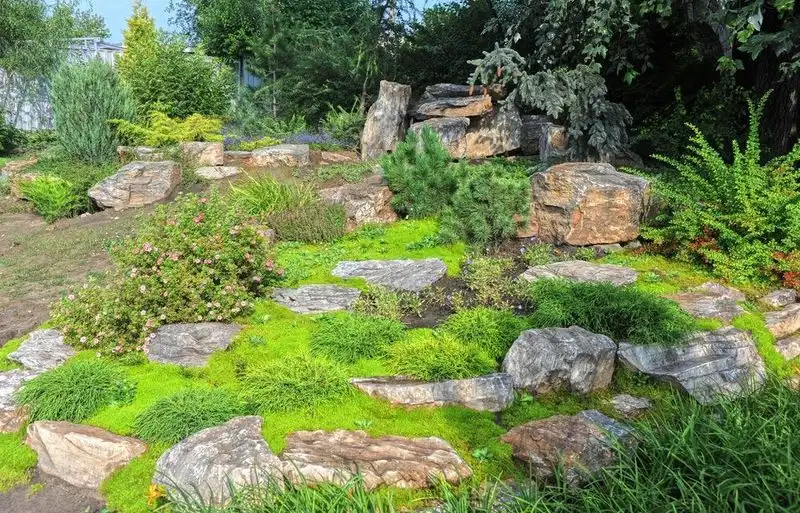
Oregano, more than just a kitchen staple, can thrive within grass lawns, offering a fragrant groundcover that’s both functional and attractive. This hardy herb is known for its resilience in poor soil conditions, making it an ideal choice for gardeners seeking low-maintenance options. Plant it in sunny areas to enjoy its aromatic foliage and tiny purple blossoms, which attract pollinators.
Roman Chamomile
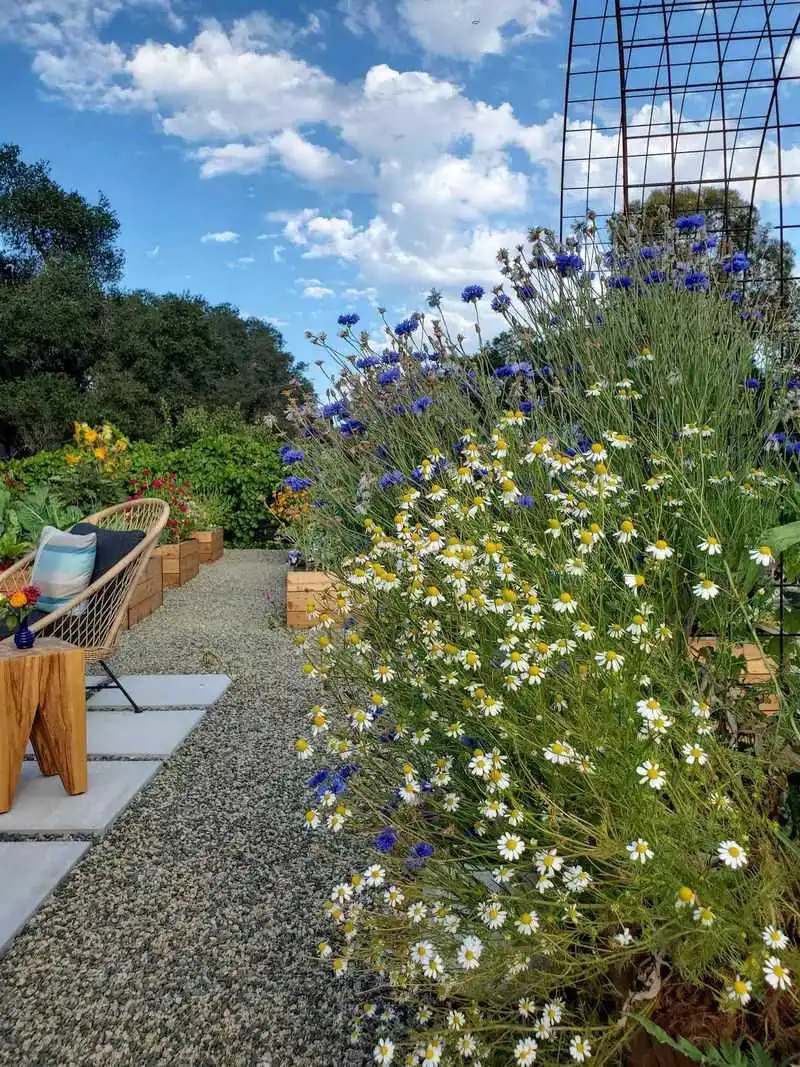
Roman Chamomile’s small, daisy-like flowers add a cheerful touch to lawns, while its feathery foliage brings texture and softness. Renowned for its calming scent, it’s often used in teas and aromatherapy. This plant thrives in well-drained soil with full sun, making it an ideal companion for grass. Beyond its beauty, Roman Chamomile attracts beneficial insects, enhancing garden health and biodiversity.
Self-Heal (Prunella)
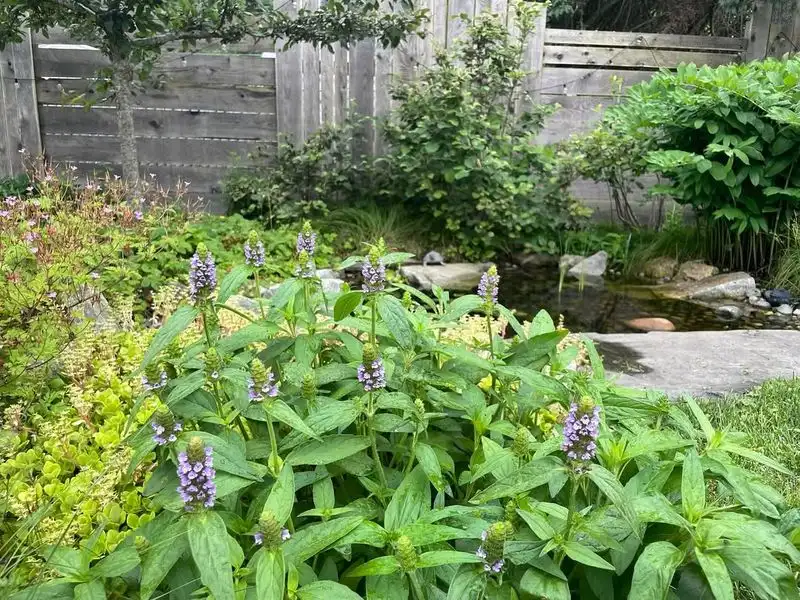
Self-Heal, or Prunella, is a resilient herb known for its medicinal properties and vibrant purple flower spikes. This plant thrives in a variety of conditions, from full sun to partial shade, and integrates seamlessly with grass. Its low-growing habit means it requires little maintenance, adding color and interest without overshadowing the lawn. Consider it for a natural and health-promoting garden addition.
Pennyroyal
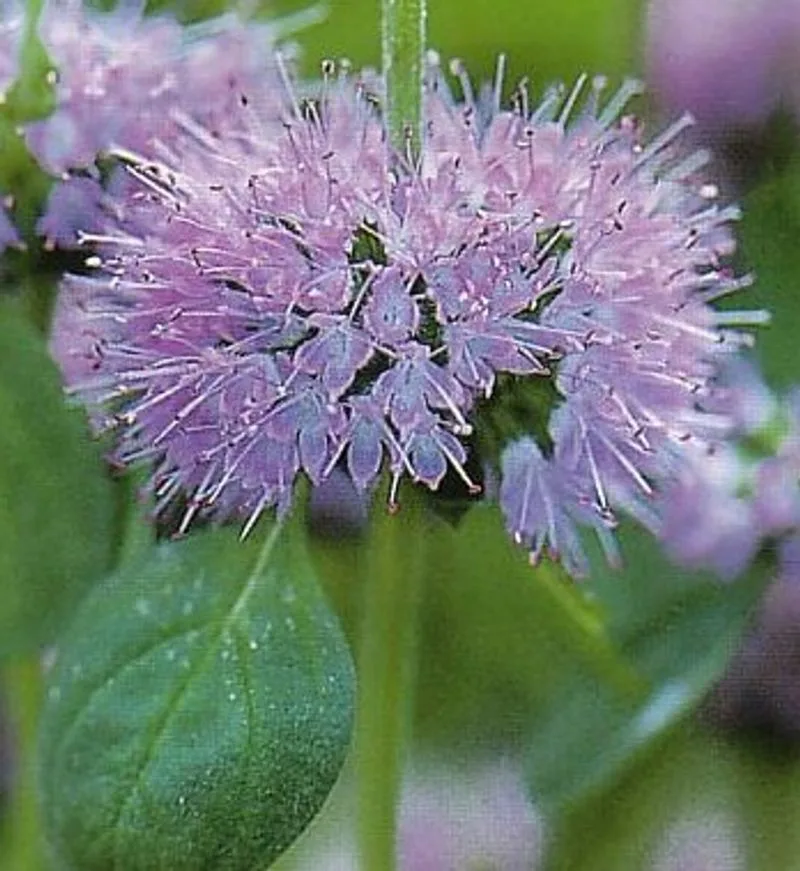
Pennyroyal’s minty aroma and subtle purple blooms make it a fragrant addition to lawns. Known for its insect-repelling properties, this herb is both practical and aesthetically pleasing. Plant it in sunny spots for the best growth, ensuring well-drained soil. Its creeping nature allows it to fill spaces effortlessly, providing a lush green cover that complements grass beautifully.
Speedwell (Veronica)

Speedwell’s delicate blue flowers and slender stems add grace and charm to grass lawns. This hardy perennial is known for its ability to spread quickly, covering bare patches with ease. Thriving in both sun and partial shade, Speedwell’s low-maintenance nature makes it a gardener’s ally. Its long blooming season ensures color and beauty throughout the growing months, enhancing the garden’s overall appeal.
Thyme

Thyme, renowned for its culinary uses, offers aesthetic and practical benefits when combined with grass lawns. Its compact growth and tiny pink flowers add a charming touch. This drought-resistant herb thrives in sunny, well-drained areas, requiring minimal upkeep. Thyme’s aromatic foliage attracts pollinators, supporting garden biodiversity while providing a fragrant, low-growing carpet that complements any grassy area.

